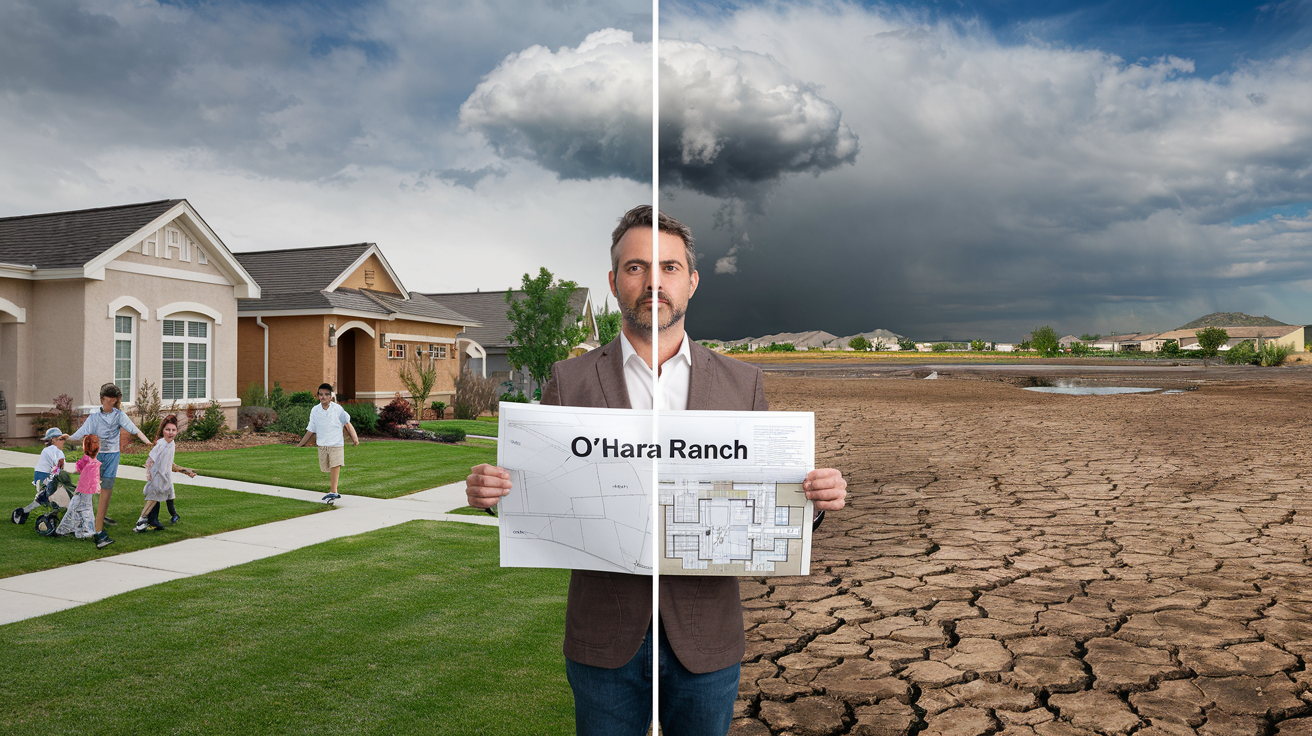Lindsay’s vision of a booming future is taking root, but water shortages, infrastructure delays, and zoning snags are putting the city’s growth to the test. The Feb 25, 2025, City Council meeting offered a deep dive into ambitious development projects and the fragile resources supporting them, revealing both promise and peril.
Over a dozen projects dot the city’s landscape. Mission Estates has an approved final map, awaiting improvements along Hickory Street. Palm Terrace 3 shifts from apartments to 10 single-family lots (5,000 sq. ft. average), with a tentative map under review. O’Hara Ranch, a 145-lot subdivision, progresses with Phase 1 (48 lots) approved and Phase 2 (39 lots) pending, though storm drainage issues linger. Hidden Oaks (50 lots) and Hermosa (137 lots) are stalled, awaiting water assurances, while Qona Estates (7 lots) and Westmore Senior Apartments (40 units, grant-funded) move through reviews. “They’re really nice homes,” a council member said of O’Hara’s models, starting at $400,000, previewed in McAllen.
Water is the linchpin. A 2023 feasibility study underscored Well 11’s planned 2026 treatment facility as key to supporting growth, but the current plant can’t handle Lindsay’s 2,500-acre-foot allocation. “We sold water this year because we can’t store it,” a planner explained, noting rainfall and processing limits. An RFP for Well 11’s inspection is underway, but developers like Hermosa’s are on hold, told, “Our water situation is delicate.” Council mused, “If everything falls into place—Well 11, Prop 218 funds—we can plug in the numbers,” but cautioned, “We may have to say no more homes.”
Infrastructure hiccups compound the challenge. Electrical equipment for new fields, delayed from January 2026 to October 2025, threatens irrigation plans. “We don’t want grass to die without power,” a council member fretted, though no cost hikes are expected unless generators are needed. The Lindsay Transit Center’s RFQ for design, due March 6, advances slowly, with talks of modern payments like Apple Pay ongoing. A TCAC meeting in Ivanhoe highlighted funding elsewhere, prompting a plea: “Let’s bring their money to Lindsay.”
Zoning woes surfaced too. Properties west of Blue Gum Avenue, rezoned to light industrial in 2022 for cannabis use, clash with the mixed-use general plan. Two owners now seek residential permits, denied under current rules. A city-led rezone would cost $5,200, versus waiting for owner action. “We don’t want spot zoning—industrial next to homes,” a planner warned, seeking council direction. No public comments were recorded on this item, but other light industrial zones exist, and consistency remains a priority.
Council also tackled youth sports gaps—baseball and softball lag behind soccer, run by others. “My girls need softball here, not Exeter,” a member said, proposing school district partnerships or free Junior Giants programs. Budget and staffing constraints loomed large, with grants like T-Mobile’s $25,000 in play but no firm plans set.
How should Lindsay balance its growth dreams with water and infrastructure realities? Tell us your take! If this comprehensive update sparked your interest, please share, follow, and comment to keep the dialogue going.









